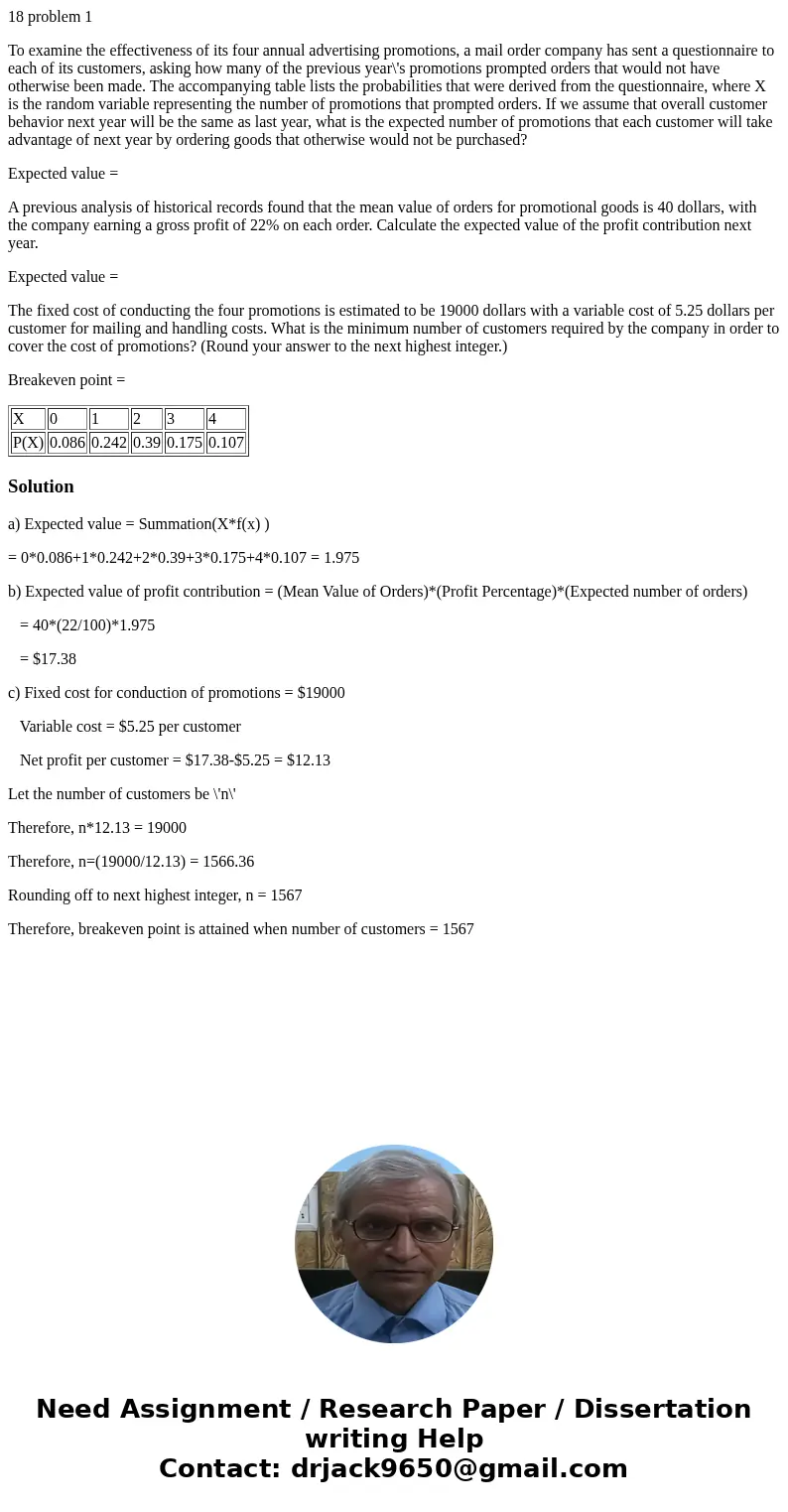18 problem 1 To examine the effectiveness of its four annual
18 problem 1
To examine the effectiveness of its four annual advertising promotions, a mail order company has sent a questionnaire to each of its customers, asking how many of the previous year\'s promotions prompted orders that would not have otherwise been made. The accompanying table lists the probabilities that were derived from the questionnaire, where X is the random variable representing the number of promotions that prompted orders. If we assume that overall customer behavior next year will be the same as last year, what is the expected number of promotions that each customer will take advantage of next year by ordering goods that otherwise would not be purchased?
Expected value =
A previous analysis of historical records found that the mean value of orders for promotional goods is 40 dollars, with the company earning a gross profit of 22% on each order. Calculate the expected value of the profit contribution next year.
Expected value =
The fixed cost of conducting the four promotions is estimated to be 19000 dollars with a variable cost of 5.25 dollars per customer for mailing and handling costs. What is the minimum number of customers required by the company in order to cover the cost of promotions? (Round your answer to the next highest integer.)
Breakeven point =
| X | 0 | 1 | 2 | 3 | 4 |
| P(X) | 0.086 | 0.242 | 0.39 | 0.175 | 0.107 |
Solution
a) Expected value = Summation(X*f(x) )
= 0*0.086+1*0.242+2*0.39+3*0.175+4*0.107 = 1.975
b) Expected value of profit contribution = (Mean Value of Orders)*(Profit Percentage)*(Expected number of orders)
= 40*(22/100)*1.975
= $17.38
c) Fixed cost for conduction of promotions = $19000
Variable cost = $5.25 per customer
Net profit per customer = $17.38-$5.25 = $12.13
Let the number of customers be \'n\'
Therefore, n*12.13 = 19000
Therefore, n=(19000/12.13) = 1566.36
Rounding off to next highest integer, n = 1567
Therefore, breakeven point is attained when number of customers = 1567

 Homework Sourse
Homework Sourse